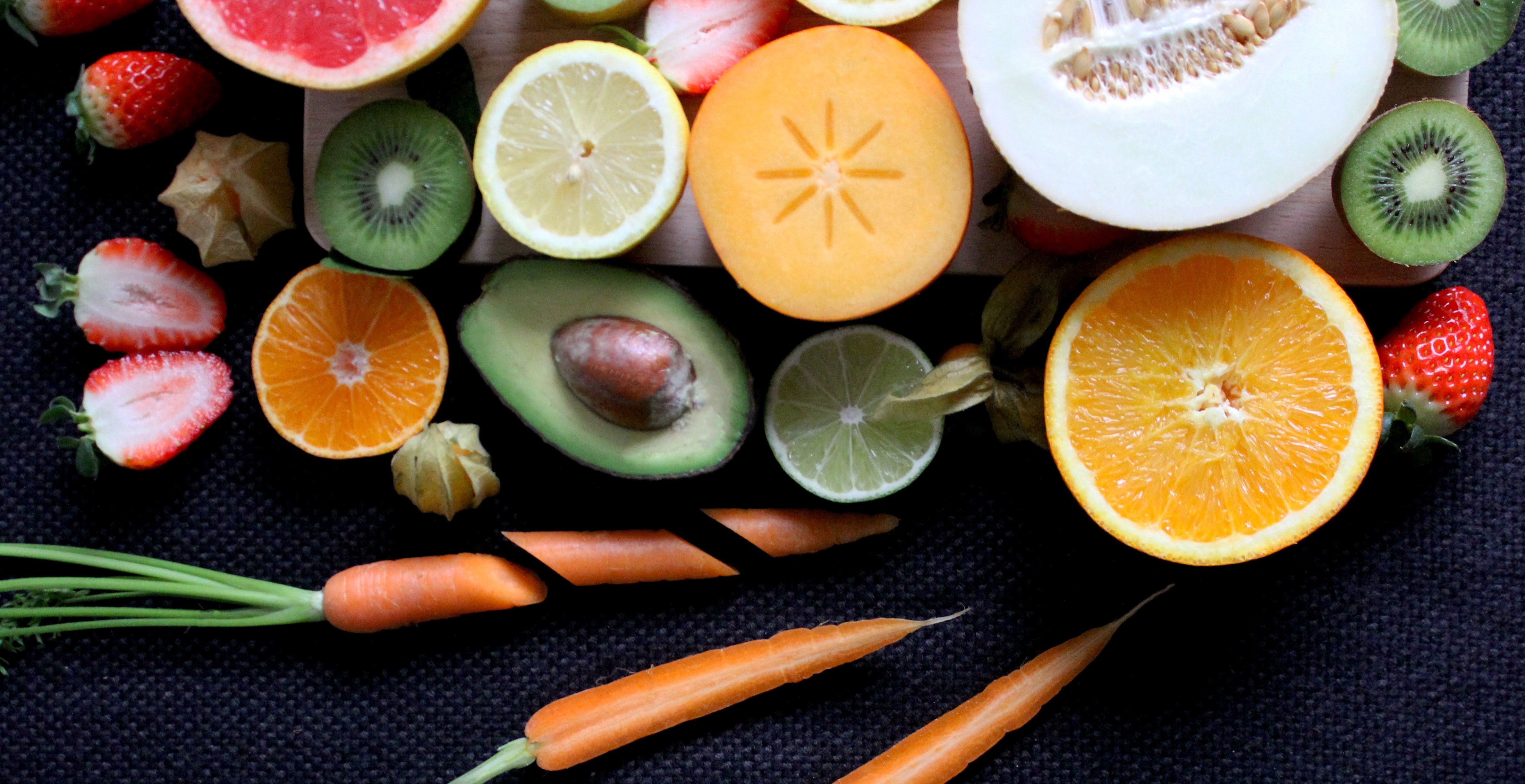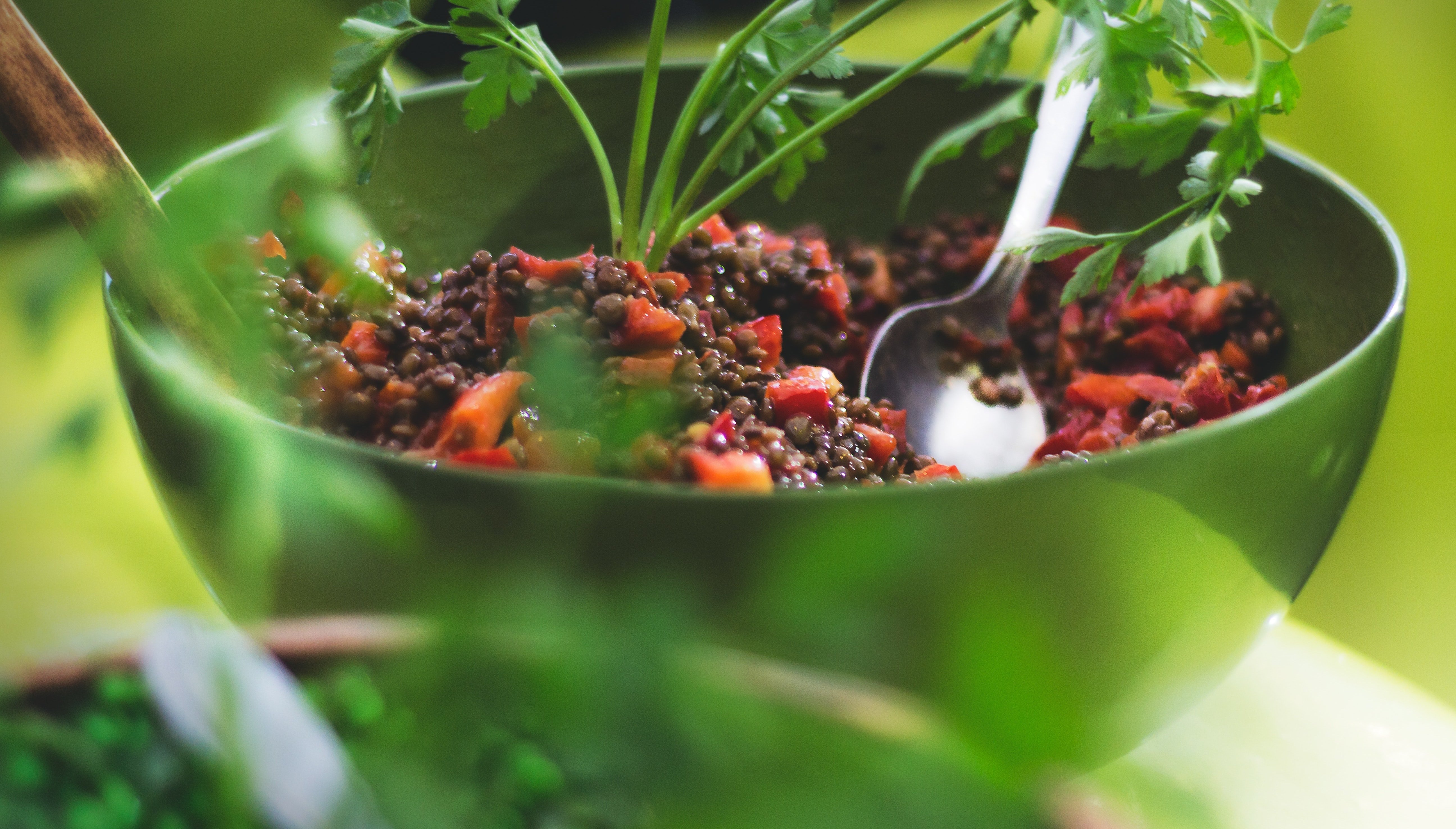Diet is one of the most important parts of maintaining a healthy lifestyle.
Whether you want to reach and maintain a healthy weight, reduce your risk of chronic diseases (like heart disease and cancer), or simply promote your overall health - what you put into your body on a daily basis truly matters. Here are five easy-to-follow tips that will help you build a healthy plate.
1. Add Lean Protein
When you set up your plate, most people find it easy to select your protein first. Some sources of lean protein include:
● Chicken
● Turkey
● Eggs
● Tofu
● Fish
The amount of fat content is what makes protein lean. You'll want to limit your intake of full-fat red meat such as steak and chops, as they are proteins with the most saturated fat. If you do eat steak, look for steaks that have the least amount of marbling, or you can trim off the fat. When you’re choosing ground meat, you want it to be at least 90% lean. This will reduce the amount of saturated fat in your diet.

2. Make Half Your Plate Fruits and Vegetables
When you were told as a kid to eat your fruits & veggies, they were onto something!
You should have more fruits and vegetables on your plate than anything else, as they contain loads of vitamins, minerals and nutrients. Try to get as many colors on your plate as possible!
Keep in mind that starchy vegetables like potatoes and beans tend to be more calorie dense, and contain more carbohydrates than their non starchy counterparts. Opt to leave the skin on your fruits and veggies for added dietary fiber and delicious texture.

3. Include Whole Grains
Low-Carb diet? Sure - that can be great if you're serious about weight loss, but if you are one of us who struggle to cut out the bagels and pasta completely, then opt for whole-grains!
Your carbs should be whole grains at least 50% of the time. Choose whole-grain pasta over refined pasta, and whole-grain bread over white bread. The whole grains will give you more dietary fiber and overall nutritional value.
It can get pretty confusing about what items are actually whole grain. Don’t be fooled by color and packaging. Caramel coloring may be added to give some bread products the appearance of being whole-grain.
Look for items that are 100% whole grain. If you look at the ingredient list, the first item should be the word “whole” plus the name of the grain, for example “whole wheat”.

4. Choose Reduced-Fat Dairy
Next, you should make sure that any dairy you’re eating is reduced-fat dairy. If you have a weight loss goal, reduced-fat dairy will have fewer calories, which will help you lose weight.
Some people may want to leave dairy out altogether, and the good news is the shelves at the grocery are now stocked with multiple plant-based dairy alternatives. They may not always have as much calcium, but some of them are fortified to have as much calcium, if not more than regular dairy milk. Almond milk and hemp milk are two delicious alternatives.

5. Take Control of Your Food
Whether you’re grocery shopping or dining out, the most important thing you can do is take control of your eating habits. Read the labels on your food and compare brands. What you’re looking for will depend on your individual goals.
If you’re looking to lose weight, you should choose options that are lower in calories. If you’re trying to lower your salt, you’ll want to watch your intake of sodium.
The easiest way to gather information from food labels is to check the daily value percentages.
Anything that is 5% or lower is considered a low source. On the other hand, anything 20% or higher is considered a high source. Look for low sources of what you want to decrease (like sodium) and high sources of what you want to increase (like fiber).
When you follow all these tips, you’ll be eating healthier and making smarter choices. When you follow them consistently, you’ll notice a big difference in your health!




